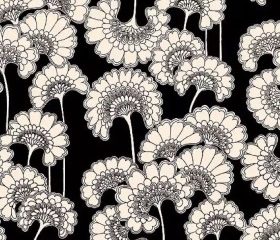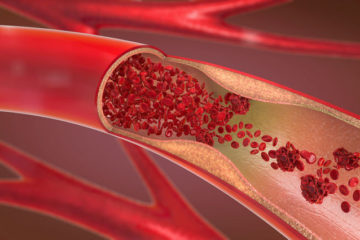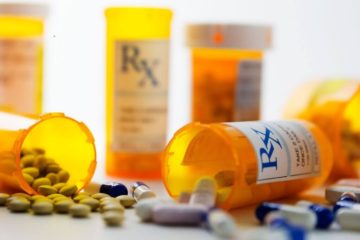When the oral contraceptive pill came onto the Australian market in February 1961, it was said to herald a new era of freedom for women: freedom from continuous childbearing and unwanted pregnancies. This freedom, however, came with a cost. As is the case with most drugs, few people think about how it works – what changes it must make in the body in order to achieve its advertised result. Read on to see what is not widely known but is easily verifiable. Find out some ways that the Pill hurts women.
How does the Pill work?
Pill users are generally uninformed about what is actually being done to their bodies when taking the Pill. They assume it is magically doing the same thing as their own hormones, not pausing to think that if it were, it would have no effects. It could not prevent pregnancy.

In order to prevent pregnancy despite sexual activity, the Pill uses synthetic hormones to prevent ovulation. The natural female hormones that would have otherwise caused ovulation are overridden by stronger synthetic hormones. 99.7% of the time, a woman on the Pill does not release an egg each month, so cannot fall pregnant. This is an incredibly high success rate. Only when someone forgets to take the Pill does ovulation occur. That happens around 9% of the time.
These synthetic hormones differ from human hormones – they are not identical; if they were, they could not be patented and sold by pharmaceutical companies. Women believe, for example, that they are on a “progesterone-only” Pill version. But no – they are not. They are on a “progestin-only” version. This a synthetic version of progesterone called ‘progestin’, whose chemical structure actually looks more like testosterone’s structure than progesterone’s. Combined Pills, with synthetic oestrogen, tell a similar tale.
In order for a woman to have a period, she must first ovulate. A period is the body sloughing off the lining of the womb that would have been home to a fertilised egg. The lining of the womb only develops in response to ovulation. No ovulation = no period therefore.
The Pill Q & A’s
Question: So why do women on the Pill still have periods if they are no ovulating?
Answer: They don’t. This ‘break-through bleed’ is simply the result of taking placebo/sugar pills for a number of days each month.
Question: If the break through bleed is nothing to do with a healthy female cycle, why have it at all?
Answer: So women will THINK they are functioning normally – when nothing could be further from the truth! It’s just a trick for women, so people can manipulate their hormones without them realising it. That could hurt sales!

Fortunately, women are now waking up. They are starting to realise that manipulating hormones doesn’t just prevent pregnancy. It does a lot more – and the way it does these things are the reasons that the Pill hurts women.
What else can the Pill do?
Substituting normal human hormones with synthetic (and altered) versions in a pill can do many things in the body. Today over 100 million women around the world are on the Pill. Many, especially teenagers, are not on it for birth control.
Other reasons women take the Pill are:
- polycystic ovarian syndrome (PCOS)
- heavy or painful menstrual periods,
- lack of periods due to excessive exercise or extreme weight loss
- menstrual cramps
- PMS (including mood swings and bloating)
- and teenage acne.
The Pill effectively masks most of these symptoms.
Instead of alerting the woman to the fact that her hormones are out of balance, usually for a lifestyle or dietary reason, she is encouraged to simply block the hormones with the synthetic variety, allowing the real issue to be masked.
Covering up health problems by masking symptoms with synthetic hormones is a very real way that the Pill hurts women.
The small potential risks of the Pill
Taking the Pill for more than a year increases your risk of:
- thromboembolism (major blood clots)
- high blood pressure
- stroke
- heart attack
- gallstones
- cancer (especially liver and breast cancers)
- severe mood swings, including suicide.
When the Pill was first released, its hormone levels were up to seven times higher than today. Risks were higher also. The list above, is, however, from studies done on today’s lower dose Pill.
These risks are not all that great.
For example, 85% of all strokes are what we call ‘ischemic strokes’. These are caused by a blood clot. The other 15% are hemorrhagic strokes – bleeding into the brain. The risk of a non-Pill user having an ischemic stroke is 4.4 out of every 100,000 women of childbearing age. (Very low). Taking the Pill pushes your risk to 8.5 out of 100,000 women (still not very great). And if you smoke, have migraines (especially those with auras) or high blood pressure, your risk is even greater. You can read more <here> about this increased risk of stroke.
Most Pill users would consider their current health problem outweighs these potential risks. They should still be aware of them, however.
The Pill and our endocrine system
When we build a dam or a large water reservoir, extensive studies must be carried out first. Way downstream from the dam. That is because we know that blocking a river to build a dam affects many many other things. The amount of water in the river downstream, for instance, and the fish and water creature populations. The soil salinity, the ecosystems of land animals, the vegetation and farms are affected by an upstream dam.

Our endocrine system is similar.
Altering our natural sex hormones by introducing a strong synthetic hormone into the mix does not just affect those hormones and the organs they control; our entire endocrine (hormonal) system is interlinked by a complex series of chemical messengers, feedback loops and many hormone-producing glands, including those in the brain. You can read <here> about how our hormones are all in sync with each other, working in a cyclic motion, largely governed by sunlight.
Changing one thing affects all the others.
Anyone on a thyroid hormone or on insulin knows how hard it is to get hormone levels right and how bad it feels to have them wrong (not to mention how dangerous). It is impossible to regulate hormones as well as our body can do – altering levels minute by minute, day and night to keep us in a state of balance (or, homeostasis).
If someone is ill and unable to produce sufficient hormones to be well, it is understandable that we should attempt to add hormones to try to bring about normal function. But to give hormones to otherwise healthy people seems to me, to be nothing short of arrogant stupidity.
Altering the entire interlinked hormonal system, usually without their knowledge, is another way that the Pill hurts women.
The more common side effects
While on the Pill, many women report they “don’t feel like themselves”, and only when coming off it do they begin to feel normal again. <This study> of 340 women reported a lowered sense of positive well-being, self-control, and vitality while on the combined Pill.
“Not feeling like oneself” is a vague side effect, but still of importance.
My main concern, as a nutritionist, is about these lesser known effects of taking the Pill for any period of time. These are the things not written on the insert label, however they result from the dysfunction of several important metabolic pathways in the body.
Read on to see if any of these ‘side effects’ are affecting you. They are very common ways that the Pill hurts women.
Some of these side effects are:
- chronic inflammation with many spin-off effects
- increased risk of an inflammatory bowel disease
- hair loss
- nutritional deficiencies
The Pill causes inflammation
All forms of the combined oral contraceptive pills worsen insulin sensitivity which interferes with blood glucose regulation. This increases the risk of Type 2 diabetes. The Finnish study that alerted us to this fact was studying normal-weight healthy young women – so we can assume this will be a worse risk for older more overweight women.
The Pill also raises cholesterol in normal-weight, healthy young women. This places users at a higher risk of heart disease, even if low risk before Pill use.
The combined Pill elevates liver enzymes. High liver enzymes show that various liver enzymes have died off (this is what is being measured), pointing to damage happening to a part of the body. This should be cause for alarm, but is widely accepted as normal for someone on the Pill.
The Pill also reduces free androgen (male) hormones by inactivating many of them, which is why it helps with acne and hirsutism (facial hair in women), which are linked to higher androgens in the blood. This shows up in a blood test as high SHBG and CBG – proteins which bind and inactivate testosterone and other predominantly male hormones as well as cortisone. This can affect libido, mood and stress management. These globulin levels can remain high up to nine months after discontinuing the Pill, the time at which the longest studies ceased. There is no proof that these effects cease soon after this time.
Inflammatory Bowel Disease Risk Increased
The contraceptive Pill use also raises the risk of inflammatory bowel diseases, Crohn’s disease and ulcerative colitis. The Pill first causes intestinal permeability (‘leaky gut’), the starting point of many inflammatory diseases.
The intestinal lining of the gut is compromised after sufficient numbers of the protective gut bacteria colonies have been killed. This is a common side effect of many chemicals including pharmaceutical drugs and pesticides. Although tested to be safe on human cells, few drugs are tested to be safe for bacteria. Since the health of our body depends upon the health of our microbiome, killing off our symbiotic bacteria only harms our own health.
The Pill is just one of a great many drugs that hurt the bacteria that reside within us. It is then not able to protect our gut, and disease risk rises.
The Pill and hair loss
The American Hair Loss Association notes the “potentially devastating effects of birth control pills on normal hair growth”.
These progestins (synthetic progesterone) in the Pill, medroxyprogesterone acetate, levonorgestrel, norgestrel and etonogestrel cause hair loss by shrinking (or miniaturizing) hair follicles, a slow process which may not be noticed for several months.

These progestins, drospirenone, norgestimate, and cyproterone, do not cause hair loss because they block androgens – but hair loss may occur after stopping the Pill as these hormones surge in a rebound effect.
Healthy hair thrives on a healthy type of oestrogen, and there is too little of it when blocked with synthetic hormones.
Nutritional deficiencies
Using the Pill for any length of time results in nutritional insufficiencies, if not overt nutritional deficiencies.
Here is how this happens:
One of the jobs of the liver is to filter the blood and clean out things it deems dangerous to have in the body. It has six metabolic pathways for doing this job – different chemicals and drugs using different pathways best suited to clear each type. Vitamins, minerals and other nutrient co-factors are needed for these pathways to work efficiently.
The contraceptive Pill is filtered through three metabolic pathways in the liver, named sulfation, methylation and glucuronidation, that make heavy use of Vitamins B12, B6, folic acid, magnesium and zinc. This means our diet needs to include more of these nutrients if we are on the Pill or else nutrient shortages will occur.
Results of nutrient shortages
If a person is low on zinc, they may also find wounds heal more slowly or they get colds more often. If they are running low on magnesium, they may have period pain, trouble sleeping or muscle cramps. Low Vitamin B12 may lead to tiredness or even heart problems. And so on.
It is worth noting that these three liver clearance pathways are also used to clear histamines (problematic in hayfever and allergies), adrenalin, Paracetamol, Nurofen, particular drugs used for panic attacks, depression and anxiety, arsenic and dopamine.

If these pathways are sluggish due to heavy use with the Pill and there are insufficient vitamins and minerals to run the system, you may suffer with hayfever, skin inflammation, allergies, drug overdose effects including potential toxicity, mood effects or feeling ‘wired’ but tired.
Since Western diets tend to be low in all of these vitamins, it places many Pill-users at risk of dozens of “down-stream” health problems. This is perhaps the most usual way that the Pill hurts women.
If you already suffer from some of these problems and are on the Pill, you will likely need more than the recommended daily allowance of these vitamins and minerals to replenish supplies again. You will probably need a therapeutic dose of a well-absorbed type of vitamin.
Masking problems does not make them go away
Using synthetic hormones to alter your body so you can avoid the pain of endometriosis or the embarrassment of acne is not dealing with the real problem that caused these issues in the first place. People seem surprised that, years later, upon going off the Pill, they still have painful periods or even worse acne.
That’s when they turn to nutritionists.
By this time, the problem is usually compounded with other health issues and takes longer to unravel. Putting off dealing with a disease while it is in its infancy, and just hoping it will go away, while not making any lifestyle changes to heal it, only postpones the hard work till later on. This postponement of disease treatment is another way the Pill hurts women.
Masking these type of diseases with the Pill is only creating more problems down the track.
Don’t let the Pill keep hurting you
If you are taking the Pill for acne, PCOS, endometriosis, or painful, irregular periods, you can get help to get your body healthy by making lifestyle changes you can manage. These are all lifestyle diseases, and you won’t believe how great you will feel when your body finally is able to heal itself.
Replenishing your body with a healthy diet and short term supplementation will allow your liver to start working optimally again. That means it can better clear out worse rubbish, making you feel better overall.

There are reliable alternatives to the Pill for birth control. And with some focus, these other diseases can also be overcome, naturally.



0 Comments